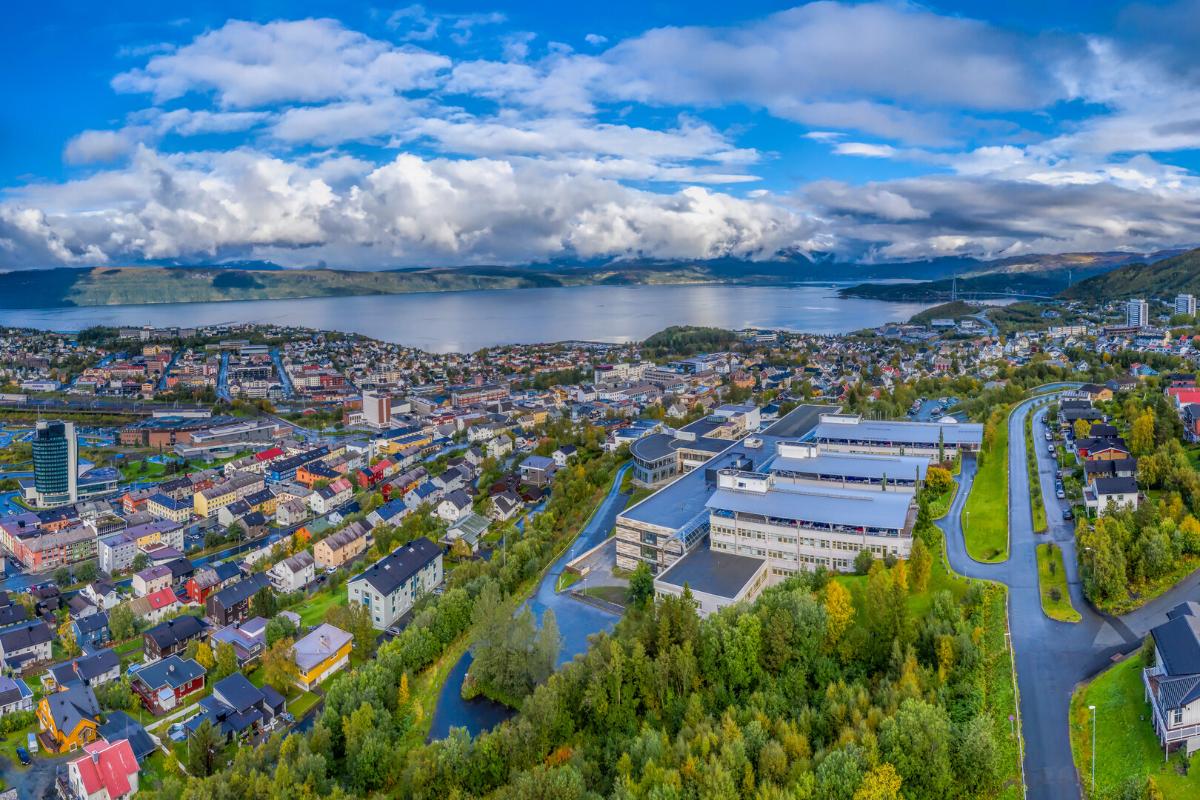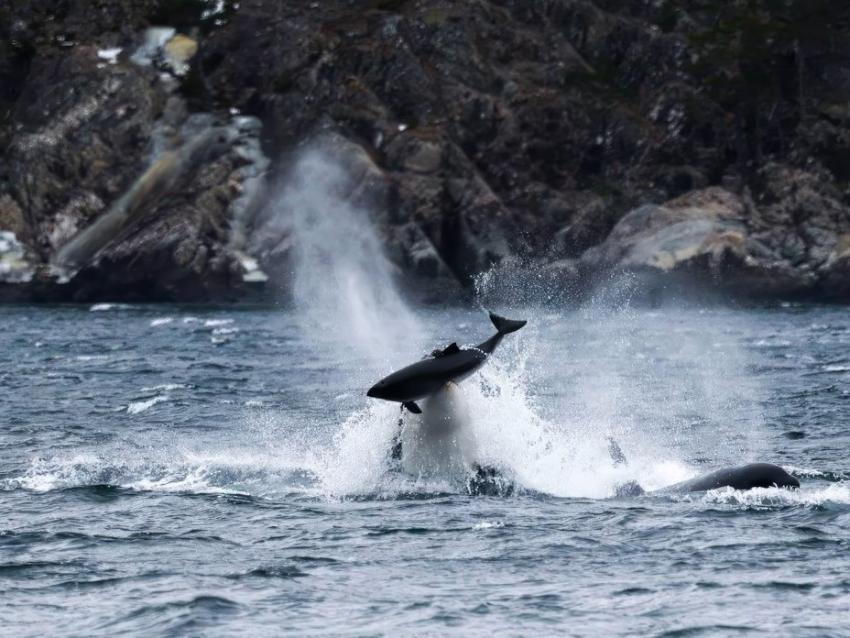Indian Researchers Look to Northern Norway
The IVT faculty at UiT has over several years built up a leading position regarding climate-adapted and sustainable infrastructure. With Indian partners, this expertise can be useful for vulnerable local communities in both the Arctic and tropical countries.

In the city of Narvik, which has been founded on the basis of mining, railway transport, and the shipping of ore, engineers has been educated since 1955. Over the years, this has contributed to building Northern Norway as a region. The engineering education is now incorporated into UiT's Faculty of Engineering Science and Technology (IVT), which is headquartered at Campus Narvik. In step with the emergence of new study programs and research initiatives, IVT has also expanded its societal mission. This has occurred in parallel with UiT in Narvik becoming a hub for an international academic community. Today, 30 percent of the employees and 11 percent of the students are from countries all over the world. IVT's international branchwork create both local and global ripple effects.
Challenges which both India and Northern Norway face with their power grids can be solved with a renewal of the energy infrastructure.
Local power grids in the south and north
Pawan Sharma, Associate Professor at IVT's Department of Electrical Engineering, leads research in fields that can lay the foundation for sustainable infrastructure. In the Arctic Energy project, he and his colleague Associate Professor Charu Sharma are developing and testing methods for how Arctic communities can become self-sufficient with the help of renewable energy. So far, they have based their work on how such power grids can be applied in Longyearbyen.
However, the same research methods can also be applied in entirely different contexts.
From 2018 to 2021, Sharma has worked as principal investigators in two research projects with Indian partners. In one project he developed a hybrid micro grid for dairy farms in India. The goal of the project was to ensure maximum utilization of available renewable energy resources while the power system remained secure and stable.
In the second project, Cooperative Isolated Renewable Energy Systems (IRES), he has contributed to developing systems which create effective exchange of power to off-grid households to affordable prices.
Common challenges
Even though India and Northern Norway are completely different in terms of population size, climate, and geography, the two parts of the world still share some common challenges. An example of this is the Smart Senja project, initiated by Troms Kraft, where UiT is a partner. This project explores solutions for how electricity can be stored and produced locally when the connection to the regional power grid has limitations.
Pawan Sharma has extensive experience with managing large power grids, since he was employed as an engineer for an Indian power supplier from 2004 to 2006. In this job, he experienced that the Indian power grid often had so-called "blackouts," which means that the grid is unable to meet the customers' needs. This leads to power cuts. How to solve such situations is something he continuously works with in his own research.
“Challenges which both India and Northern Norway face with their power grids can be solved with a renewal of the energy infrastructure. Renewable energy resources are promising source of power production and will play great role in balancing power demand in future”, Sharma points out.
Advantages of collaboration
Sharma believes that research collaboration and knowledge sharing with Indian partners can provide new opportunities for UiT's research communities.
“Leading Indian Universities have good laboratory infrastructures, which can be used for real-time studies, specifically in studies related to solar power generation, as India have solar irradiance throughout the year. This is not possible in the Arctic. Here students and researchers are able to carry out their research only in limited time frame of 3-4 months duration during summer”, Sharma says.
He also believes that Indian researchers and universities can benefit from collaborating in other fields that UiT specializes in. This includes research on hydropower, pumped hydro storage, wave and tidal power generation, fuel cells, and wind power production.
Nature's own solutions
At the IVT faculty, progress is also being made in other academic fields to create sustainable solutions for infrastructure. An example of this is the SPRING project. There, research is being conducted on how nature's own processes, in the form of new types of enzymes, can remove pollution and toxins from water sources. The project has received funding from the EU's Horizon program where four research institutions from India participate, two from Hungary and Portugal, in addition to SINTEF Narvik.
An important goal of the project is that this technology can provide an environmentally friendly alternative to water purification with chlorine in India. Among the country's 1.4 billion inhabitants, however, 63 million lack access to clean drinking water. Sewage discharges and various types of water source pollution often lead to outbreaks of diseases such as cholera and typhoid.
The project is led by Professor Rajnish Kaur Calay, at the IVT's Department of Civil, Energy and Material Technology. As she sees it, IVT's commitment to sustainable technology can constitute an important platform for UiT's north-south collaboration.
Engineers are always interested in testing their own technology in extreme conditions, to the utmost limit.
According to Calay, there are a number of approaches to environmental and climate adaptation in IVT's research programs that she believes may be of interest to Indian researchers. She thinks that academic communities in Norway and UiT are ahead of India in terms of green infrastructure, recycling of building materials, and waste management.
“In India, infrastructure is being built on a large scale now, and it has a significant impact on our resources. It can be very educational for Indian researchers to learn more about the expertise UiT researchers have in such fields”, Calay states.
Calay also points out that the challenging conditions in Northern Norway provide good prerequisites for testing new research methods and technology related to climate adaptation.
“Even though there are large differences between the two continents, there are many parallels when it comes to how infrastructure is affected by climate change. It is attractive for Indian engineers to work in Northern Norway. It is a geographical area that is well-suited for challenging oneself professionally and scientifically since it is done under extreme conditions. An example of this is that materials are affected in a completely different way when they are exposed to severe cold. Engineers are always interested in testing their own technology in extreme conditions, to the utmost limit”, says Calay.
Monitoring the tolerance limit of infrastructure
Harpal Singh, an associate professor at IVT, has specialized in testing technology that can ensure robust infrastructure. He is the project leader for Herøy FoU, which is financed by Nordland county and the Norwegian Public Roads Administration. In such a context, he collects data on vibrations in the Herøysund bridge, which is monitored in real-time. With the help of artificial intelligence, Singh can perform analyses on potential flaws that could lead to structural collapse, and how it is possible to extend the lifespan of the bridge.
As Singh sees it, the technology he develops can be useful in scenarios where infrastructure is put under pressure by climate changes. Monitoring and maintenance of infrastructure over a longer period can then save society significant expenses.
“This will lead to us being able to save a lot of money for both India and Norway and result in reduced CO2 emissions. Due to the fact that extreme weather is becoming increasingly prevalent all over the earth, key infrastructure is also exposed to great strains. When it comes to the climate in the Arctic, UiT is at the forefront of research. If researchers at UiT exchange knowledge and collaborate with partners in India, I believe that we can find much better solutions to the challenges we engineers face. This will benefit local communities in both the Arctic and India”, Singh states.
Courses with global reach
At IVT, a project called PEERS has been initiated for master's students from Europe, Japan, and India where they can participate in courses on sustainable infrastructure. This can involve water purification, development of environmentally friendly building materials, circular economy, GIS and analysis of satellite data, smart grids, robotics, or the use of artificial intelligence.
Calay believes there is great potential in expanding the collaboration with Indian partners. By including students initially through training, the academic communities in both countries can have the opportunity to become acquainted with new talents.
“This type of exchange can have a significant impact on how future societies develop. For the students, it is valuable to participate in our courses. Both cultures can become accustomed to each other by practicing research and being part of a research community. By having Indian students at UiT, and by becoming familiar with the work culture in Norway, they can have better opportunities to be employed by Norwegian companies”, concludes Calay.

